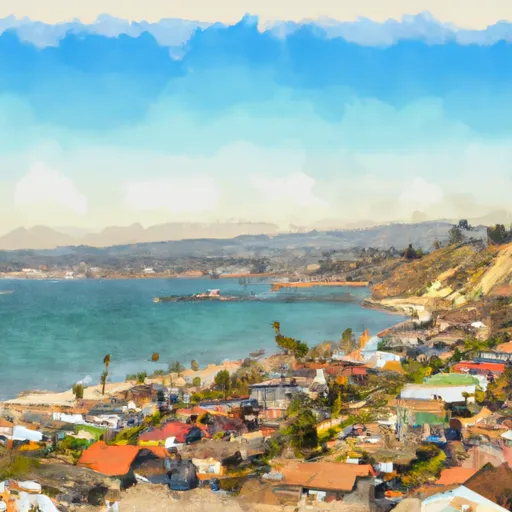-
 Snoflo Premium
Snoflo Premium
Get unlimited access to all our content
With no Ad interruptions! - Start Your Free Trial Login with existing account
Capistrano-Beach
Eden Index
Climate
8.9
•
Recreation
5.8
•
Community
5.0
•
Safeguard
6.8/10

Capistrano Beach is a beautiful coastal community located in southern California. The area experiences a typical Mediterranean climate, with mild and wet winters and warm and dry summers. The hydrology constituents in Capistrano Beach are mainly composed of the Pacific Ocean and San Juan Creek. Residents and visitors can enjoy a variety of outdoor recreational activities, such as surfing, swimming, and beach volleyball at Capistrano Beach. The area is also home to several parks, including the Pines Park, which offers spectacular views of the ocean and is ideal for picnics and walking. Additionally, the Dana Point Harbor is nearby and offers opportunities for boating, fishing, and whale watching.
What is the Eden Index?
The Snoflo Eden Index serves as a comprehensive rating system for regions, evaluating their desirability through a holistic assessment of climate health, outdoor recreation opportunities, and natural disaster risk, acknowledging the profound impact of these factors on livability and well-being.
Climate Health Indicator (CHI): 8.9
Capistrano-Beach receives approximately
357mm of rain per year,
with humidity levels near 78%
and air temperatures averaging around
18°C.
Capistrano-Beach has a plant hardyness factor of
10, meaning
plants and agriculture in this region tend to thrive here all year round.
By considering the ideal temperature range, reliable water supplies, clean air, and stable seasonal rain or snowpacks, the Climate Health Indicator (CHI) underscores the significance of a healthy climate as the foundation for quality living.
A healthy climate is paramount for ensuring a high quality of life and livability in a region, fostering both physical well-being and environmental harmony. This can be characterized by ideal temperatures, reliable access to water supplies, clean air, and consistent seasonal rain or snowpacks.
Weather Forecast
Streamflow Conditions
Laguna-San Diego Coastal
Area Rivers
Laguna-San Diego Coastal
Snowpack Depths
Laguna-San Diego Coastal
Reservoir Storage Capacity
Laguna-San Diego Coastal
Groundwater Levels
Recreational Opportunity Index (ROI): 5.8
The Recreational Opportunity Index (ROI) recognizes the value of outdoor recreational options, such as parks, hiking trails, camping sites, and fishing spots, while acknowledging that climate plays a pivotal role in ensuring the comfort and consistency of these experiences.
Access to outdoor recreational opportunities, encompassing activities such as parks, hiking, camping, and fishing, is crucial for overall well-being, and the climate plays a pivotal role in enabling and enhancing these experiences, ensuring that individuals can engage in nature-based activities comfortably and consistently.
Camping Areas
| Campground | Campsites | Reservations | Toilets | Showers | Elevation |
|---|---|---|---|---|---|
| Ortega Flats - Caspers Wilderness Co Park | None | 388 ft | |||
| Live Oak - Caspers Wilderness Co Park | None | 387 ft | |||
| Blue Jay | 50 | 3,358 ft | |||
| Crystal Cove State Park - Moro Campground | 57 | 126 ft | |||
| San Mateo - San Onofre State Beach | 159 | 100 ft | |||
| Caspers Wilderness Park | None | 387 ft | |||
| Doheny State Beach | 122 | 17 ft | |||
| San Clemente State Beach | 160 | 125 ft | |||
| San Onofre Beach Military | None | 46 ft | |||
| Bluffs - San Onofre State Beach | 16 | 97 ft |
Catastrophe Safeguard Index (CSI):
The Catastrophe Safeguard Index (CSI) recognizes that natural disaster risk, encompassing floods, fires, hurricanes, and tornadoes, can drastically affect safety and the overall appeal of an area.
The level of natural disaster risk in a region significantly affects safety and the overall livability, with climate change amplifying these risks by potentially increasing the frequency and intensity of events like floods, fires, hurricanes, and tornadoes, thereby posing substantial challenges to community resilience and well-being.
Community Resilience Indicator (CRI): 5.0
The Community Resilience Indicator (CRI) recognizes that education, healthcare, and socioeconomics are crucial to the well-being of a region. The CRI acknowledges the profound impact of these elements on residents' overall quality of life. By evaluating educational resources, healthcare accessibility, and economic inclusivity, the index captures the essential aspects that contribute to a thriving community, fostering resident satisfaction, equity, and social cohesion.

